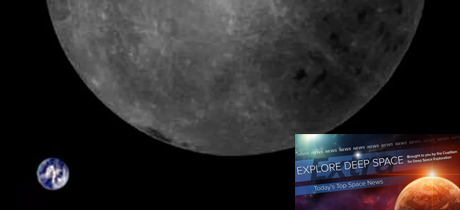In Today’s Deep Space Extra… NASA’s Commercial Crew Program test flights of SpaceX’s Crew Dragon and Boeing’s CST-100 Starliner have been slowed by a record partial U.S. government shutdown. Global temperatures continue to rise, according to independent assessments from NASA and NOAA.
Human Space Exploration
SpaceX’s Crew Dragon suffers third straight setback
Coalition Member in the News – Boeing
CNET.com (2/6): NASA wants to launch astronauts from U.S. soil for the first time in years with Elon Musk and Boeing’s help — but it still needs time. We’re going to have to wait a bit longer to finally see astronauts take a ride aboard new spacecraft from SpaceX and Boeing. NASA announced Wednesday that the first uncrewed test launches of SpaceX’s Crew Dragon spaceship and Boeing’s Starliner have been pushed back yet again. This is the third month in a row that NASA has announced a further delay for the first major test flight of Crew Dragon.
Space Science
Earth marks fourth hottest year on record as Congress opens climate hearings
Politico (2/6): 2018 was the Earth’s fourth warmest year, according to independent climate assessments from NASA and NOAA that were presented on Wednesday. Collectively, the last five years represent the warmest years in the modern record, dating to 1880, supporting concerns over a changing climate due to rising concentrations of carbon dioxide. The U.S. House’s new Democratic leadership plans hearings on the issue.
Tiny swarming spacecraft could do more than map the solar system
NBC News (2/5): A NASA planetary science veteran and Honeybee Robotics have conjured a strategy for preparing future human explorers for a range of solar system destinations using fleets of precursor robot hoppers that are equipped to refuel themselves. The mobile robots are the brainchild of Philip Metzger, a University of Central Florida (UCF) planetary scientist, who participated in a recent demonstration of the concept, which is intended to lower costs and use off the shelf components, much like CubeSats.
Hayabusa 2 probe to try to land on asteroid Ryugu on February 22: JAXA
The Mainichi of Japan (2/6): The Japan Aerospace Exploration Agency (JAXA) has set February 28 as the landing date for its Hayabusa 2 asteroid sample return mission. The spacecraft, launched in late 2014, reached the asteroid Ryugu in late June and deployed lander/hoppers to the surface in September and October. The search for a landing zone sufficiently free of boulders in order to collect its first sample of surface material has paced the descent plans. The probe is to leave Ryugu late this year and return to Earth with its bounty in late 2020.
Inside-out dense iron planets probably the result of massive collision
Ars Technica (2/5): Our own solar system portrays a violent past when it comes to planetary formation, even the Earth and Moon appears the product of a substantial collision between two bodies. Then, there is the Kepler-107 star system, one iron rich with at least four planets, perhaps shaped by a series of head on collisions.
A space rock collision may explain how this exoplanet was born
ScienceNews.org (2/4): Cataclysmic collisions between space rocks have helped explain some of the solar system’s biggest mysteries, from how the moon formed to how Uranus got its lopsided rotation. But convincing evidence for such events happening outside of the solar system is scant. Now scientists think that they have found the first known example of a near head-on collision between two massive worlds in another planetary system, roughly 2,000 light-years away from Earth.
Other News
SciTech Europa (2/6): In a meeting with SciTech Europa in Brussels, European Space Agency (ESA) director general Johann-Dietrich Wörner discussed future and ongoing exploration themes, stressing the peaceful uses of space to improve observations of solar activity, reduce orbital debris and advance planetary protection strategies to prevent an impact between the Earth and a large meteorite or asteroid.
Chinese satellite captures stunning backside image of the Moon with Earth
Verge (2/5): China’s Longjiang-2 satellite, which entered orbit around the Moon last June, has returned an image of the Moon’s far side with Earth in the background. The image was taken on February 3. The satellite acts a communications relay for China’s Chang’e 4, which landed on the Moon’s far side with a rover early this year, a first.

